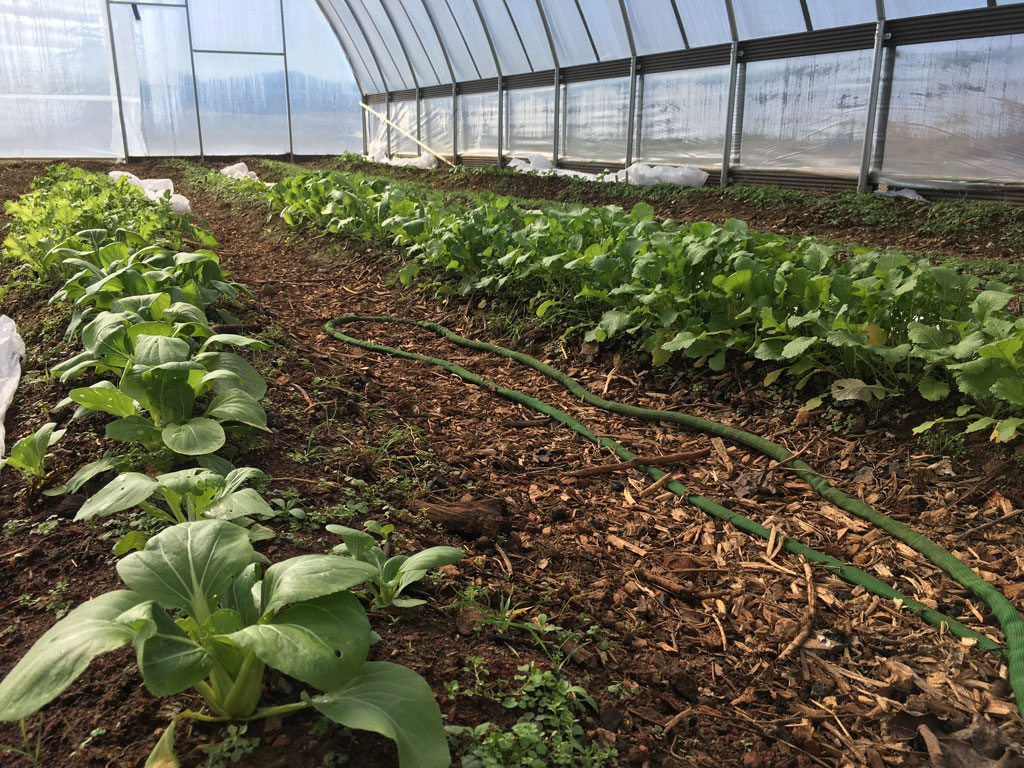| Scientific Name | Ocimum basilicum |
| Growing Days | 60-90 |
| Varieties We Grow | Genovese |
| Growing Notes | Basil likes it warm! Also, if you pinch off the top set of leaves, it will grow bushier and more productive. |
| Battle of the Bugs | Basil is pretty hardy. Slugs and Japanese beetles might chomp on the leaves, but there is usually enough to share. |
| Fun Fact | Basil can be grown year round indoors with the proper lighting. (We’ll have to try that!) |
| Don’t Waste It! | Use basil to flavor all sorts of dishes. Use it fresh or dry the leaves. Yum! |
Eggplant
| Scientific Name | Solanum melongena |
| Growing Days | 100-120 days…that’s 4 months! |
| Varieties We Grow | Black Beauty |
| Growing Notes | Eggplant likes it hot; we treat them like tomatoes (they are in the same family, after all). |
| Battle of the Bugs | Flea beetles love young eggplant leaves. Hopefully they outgrow them. |
| Fun Fact | The plants can have thorns on the stem…that was a surprise! |
| Don’t Waste It! | Enjoy it fried, sauteed, baked, breaded, stuffed, or roasted. |
Daikon Radish
| Scientific Name | Raphanus sativus |
| Growing Days | 45-60 |
| Varieties We Grow | Japanese Minowase |
| Growing Notes | Daikon radish are pretty self sufficient (hurray!); once seeded, they pretty much take care of themselves. It’s a good idea to thin the seedlings so they don’t compete. |
| Battle of the Bugs | These guys are pretty hardy and we’ve had pretty good luck avoiding serious damage, at least so far! |
| Fun Fact | Daikon radish is also called “tillage radish” because it grows so deep (over 12″!) and helps to break up soil. We do that here at Trippy Acres! |
| Don’t Waste It! | Eat it raw, steamed, or sauteed. No need to peel unless you want to. The greens (and seed pods) are also edible! |
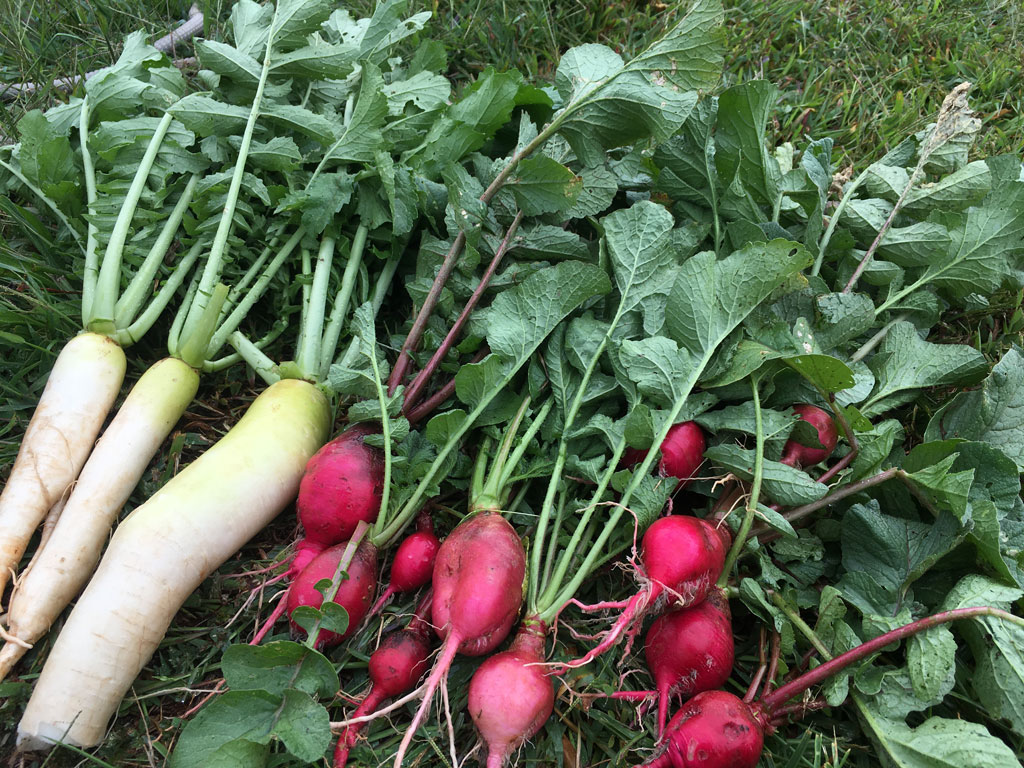
Cucumbers
| Scientific Name | Cucumis sativus |
| Growing Days | 60-70 |
| Varieties We Grow | Marketmore, Manny (F1), Boston Pickling |
| Growing Notes | Cucumbers are vining plants, so grow them on a trellis. If it gets very hot and dry, they might taste a little bitter, so keep them well watered if you can! |
| Battle of the Bugs | Our nemesis…the cucumber beetle! These little buggers fly off before you can catch them. They spread a disease (cucumber mosaic virus) that takes out the entire plant and also spreads. It’s nasty and disheartening because that plant needs to be pulled and discarded right away. Total loss. |
| Fun Fact | A cucumber is actually a fruit! |
| Don’t Waste It! | Eat the skin 🙂 |

Collards
| Scientific Name | Brassica oleracea |
| Growing Days | 80-90 |
| Varieties We Grow | Champion, Morris Heading |
| Growing Notes | Collards like it cool and they do great even through most of the winter. They seem to handle our summers as well, though the leaves taste better when grown in cooler temps. |
| Battle of the Bugs | Those darned cabbage moths/worms do a number on collard greens. We inspect the leaves daily and hope to keep them under control as long as possible. Try catching a cabbage moth with a butterfly net…it is quite infuriating! |
| Fun Fact | Collards are in the same family as kale, cabbage, broccoli, and brussels sprouts…they all came from wild cabbage! |
| Don’t Waste It! | Eat the whole plant (though the stems and veins can get tough so you might want to remove them). Steam or sautee. Try cooking it in your Instant Pot for 2 minutes…yum! |
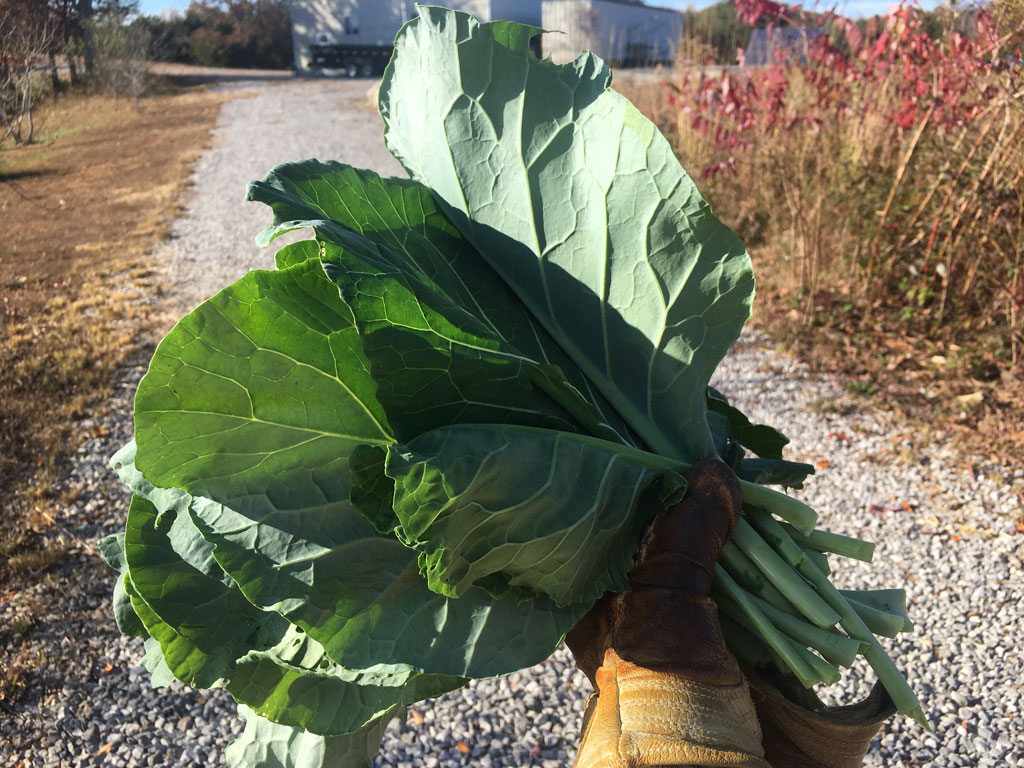
Cauliflower
| Scientific Name | Brassica oleracea |
| Growing Days | 50-100 |
| Varieties We Grow | Snowball |
| Growing Notes | Cauliflower is a tough one! I’ll update this if I ever successfully grow one 🙂 |
| Battle of the Bugs | Cabbage moths/worms…ugh! |
| Fun Fact | When the white head is a few inches, it needs blanching (cover the head with the outer leaves with a rubber band or twine to keep light out). That’s a high maintenance vegetable! |
| Don’t Waste It! | Cauliflower is delicious raw, steamed, or roasted. Try roasting a “cauliflower steak”…yum! |
Carrots
| Scientific Name | Daucus carota |
| Growing Days | 60-70 |
| Varieties We Grow | Danvers, Scarlet Nantes |
| Growing Notes | Carrot seeds are tiny! They take 2-3 weeks to germinate and you need to keep them moist and clear from weed competition. It’s a bit tricky! |
| Battle of the Bugs | Carrots seem to be pretty hardy once they get past the germination and early growth stage. |
| Fun Fact | Carrots are “biennial” which means they don’t produce seeds until the second year. That’s a long time to wait to collect seeds! |
| Don’t Waste It! | Carrots are too delicious to waste! Eat them raw or cooked. Don’t forget the greens…they are edible too! |
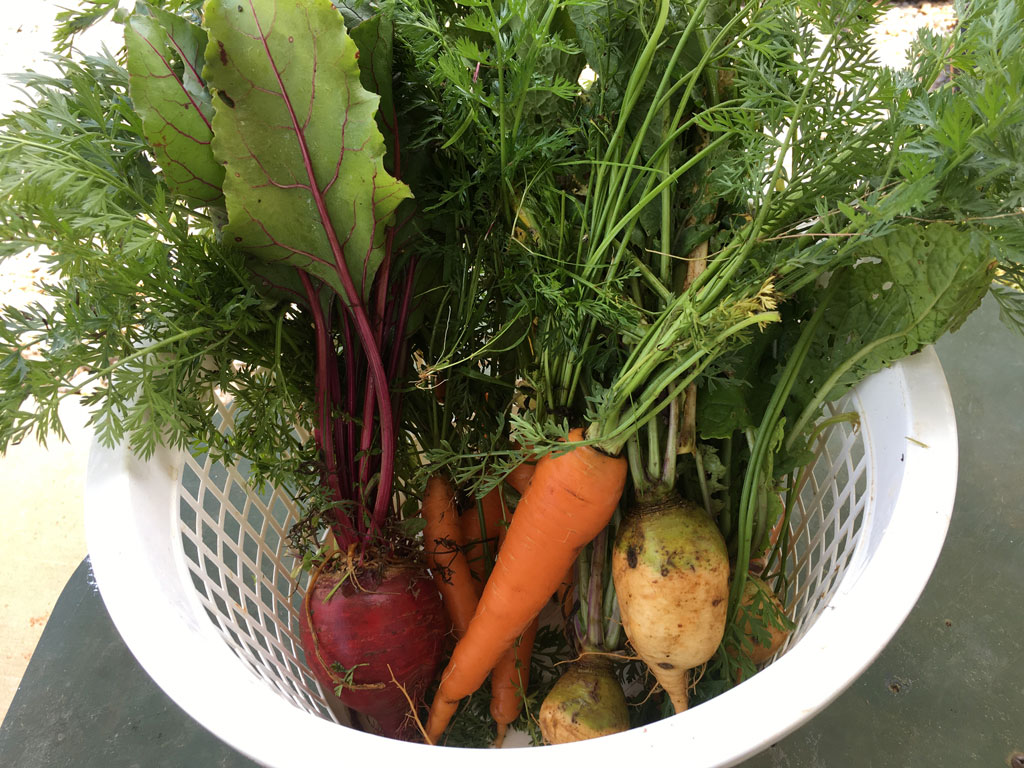
Cabbage
| Scientific Name | Brassica oleracea |
| Growing Days | 70 |
| Varieties We Grow | Mammoth Red Rock; Golden Acre |
| Growing Notes | Cabbage is a cool season crop. If it gets too warm too quick, it will not form a head and will instead go to seed (ask me how I know!). |
| Battle of the Bugs | There is a moth called the cabbage moth. Enough said. |
| Fun Fact | Apparently, Mark Twain once said, “Cauliflower is nothing but cabbage with a college education.” (I read that on the internet, so it must be true) 🙂 |
| Don’t Waste It! | Boil, roast, saute, or enjoy it raw! |
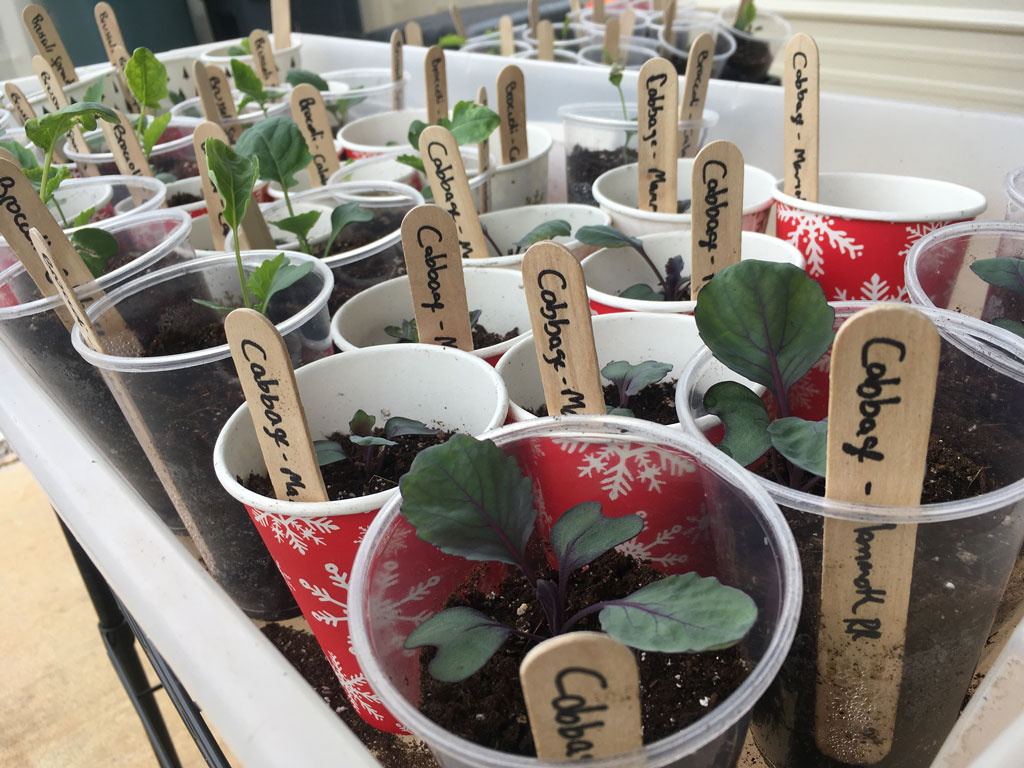
Broccoli
| Scientific Name | Brassica oleracea |
| Growing Days | 100-150 days…that’s a long time! |
| Varieties We Grow | Calabrese; Early Purple Sprouting |
| Growing Notes | So far our broccoli has mostly lost the battle… |
| Battle of the Bugs | Oh those darned cabbage moths! |
| Fun Fact | Broccoli is actually a large, edible flower. |
| Don’t Waste It! | Try broccoli raw, steamed, or boiled. The leaves are great too! Treat them as you would collard greens. |
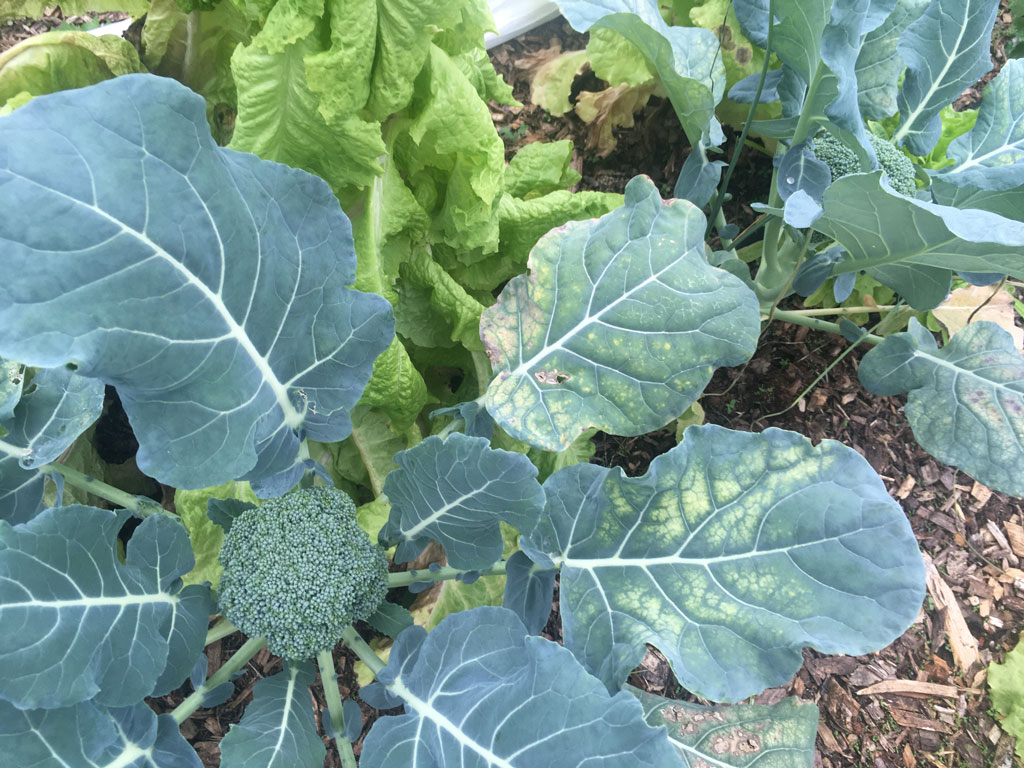
Bok Choy
| Scientific Name | Brassica rapa |
| Growing Days | 45-60 |
| Varieties We Grow | Sozhou Baby |
| Growing Notes | Bok choy does not like warm days. It bolts really easily so plant it early and harvest it before it warms up too much! |
| Battle of the Bugs | Flea beetles like everything, including bok choy leaves. |
| Fun Fact | Bok choy is sometimes called a “soup spoon” because of the shape of the leaves. (That seems like a bit of stretch to me though!) |
| Don’t Waste It! | All of the plant can and should be eaten! Eat it raw, steamed, or otherwise cooked. |
